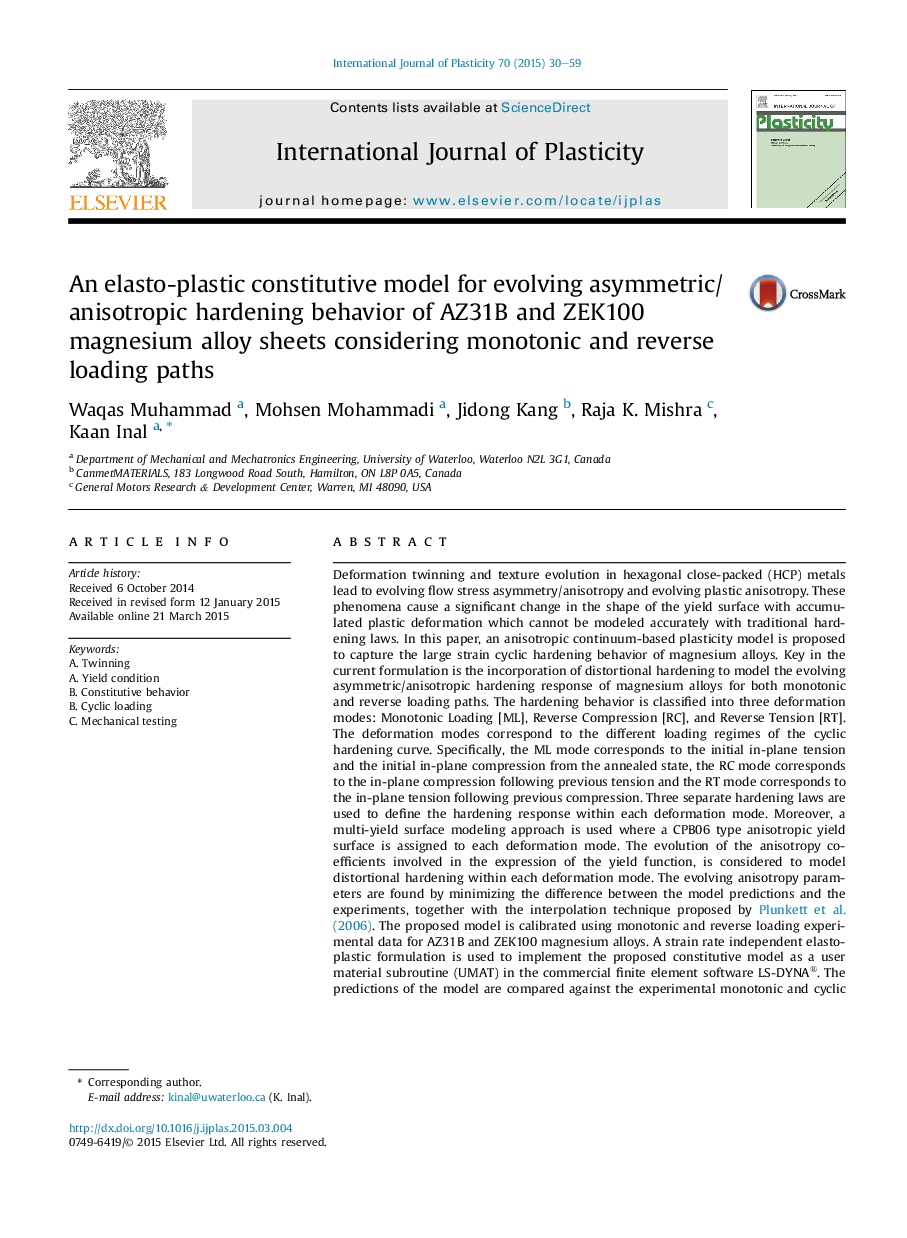| کد مقاله | کد نشریه | سال انتشار | مقاله انگلیسی | نسخه تمام متن |
|---|---|---|---|---|
| 786604 | 1465603 | 2015 | 30 صفحه PDF | دانلود رایگان |

• Anisotropic model is proposed to capture the cyclic behavior of magnesium alloys.
• The proposed model is calibrated using monotonic and reverse loading experimental data.
• An excellent agreement is found between the simulated and experimental results.
Deformation twinning and texture evolution in hexagonal close-packed (HCP) metals lead to evolving flow stress asymmetry/anisotropy and evolving plastic anisotropy. These phenomena cause a significant change in the shape of the yield surface with accumulated plastic deformation which cannot be modeled accurately with traditional hardening laws. In this paper, an anisotropic continuum-based plasticity model is proposed to capture the large strain cyclic hardening behavior of magnesium alloys. Key in the current formulation is the incorporation of distortional hardening to model the evolving asymmetric/anisotropic hardening response of magnesium alloys for both monotonic and reverse loading paths. The hardening behavior is classified into three deformation modes: Monotonic Loading [ML], Reverse Compression [RC], and Reverse Tension [RT]. The deformation modes correspond to the different loading regimes of the cyclic hardening curve. Specifically, the ML mode corresponds to the initial in-plane tension and the initial in-plane compression from the annealed state, the RC mode corresponds to the in-plane compression following previous tension and the RT mode corresponds to the in-plane tension following previous compression. Three separate hardening laws are used to define the hardening response within each deformation mode. Moreover, a multi-yield surface modeling approach is used where a CPB06 type anisotropic yield surface is assigned to each deformation mode. The evolution of the anisotropy coefficients involved in the expression of the yield function, is considered to model distortional hardening within each deformation mode. The evolving anisotropy parameters are found by minimizing the difference between the model predictions and the experiments, together with the interpolation technique proposed by Plunkett et al. (2006). The proposed model is calibrated using monotonic and reverse loading experimental data for AZ31B and ZEK100 magnesium alloys. A strain rate independent elasto-plastic formulation is used to implement the proposed constitutive model as a user material subroutine (UMAT) in the commercial finite element software LS-DYNA®. The predictions of the model are compared against the experimental monotonic and cyclic (CTC and TCT) flow stresses and r-values of AZ31B and ZEK100 sheets along different test directions. An excellent agreement is found between the simulated and experimental results.
Journal: International Journal of Plasticity - Volume 70, July 2015, Pages 30–59